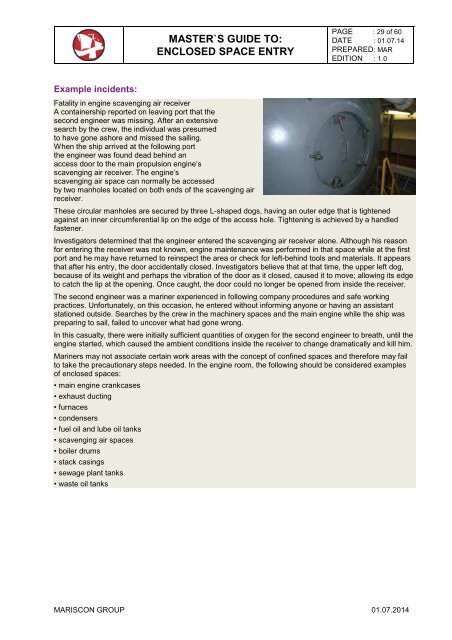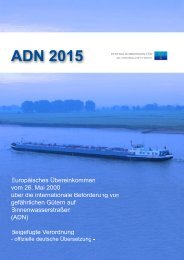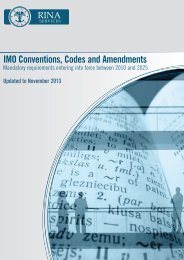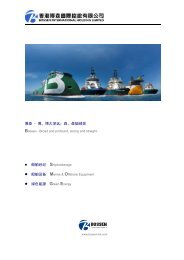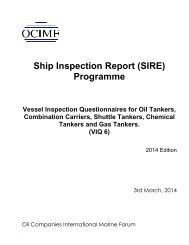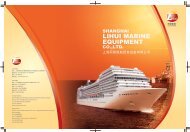MASTER`S GUIDE TO: ENCLOSED SPACE ENTRY
You also want an ePaper? Increase the reach of your titles
YUMPU automatically turns print PDFs into web optimized ePapers that Google loves.
<strong>MASTER`S</strong> <strong>GUIDE</strong> <strong>TO</strong>:<br />
<strong>ENCLOSED</strong> <strong>SPACE</strong> <strong>ENTRY</strong><br />
PAGE : 29 of 60<br />
DATE : 01.07.14<br />
PREPARED: MAR<br />
EDITION : 1.0<br />
Example incidents:<br />
Fatality in engine scavenging air receiver<br />
A containership reported on leaving port that the<br />
second engineer was missing. After an extensive<br />
search by the crew, the individual was presumed<br />
to have gone ashore and missed the sailing.<br />
When the ship arrived at the following port<br />
the engineer was found dead behind an<br />
access door to the main propulsion engine’s<br />
scavenging air receiver. The engine’s<br />
scavenging air space can normally be accessed<br />
by two manholes located on both ends of the scavenging air<br />
receiver.<br />
Scavenge space inspection door.<br />
These circular manholes are secured by three L-shaped dogs, having an outer edge that is tightened<br />
against an inner circumferential lip on the edge of the access hole. Tightening is achieved by a handled<br />
fastener.<br />
Investigators determined that the engineer entered the scavenging air receiver alone. Although his reason<br />
for entering the receiver was not known, engine maintenance was performed in that space while at the first<br />
port and he may have returned to reinspect the area or check for left-behind tools and materials. It appears<br />
that after his entry, the door accidentally closed. Investigators believe that at that time, the upper left dog,<br />
because of its weight and perhaps the vibration of the door as it closed, caused it to move; allowing its edge<br />
to catch the lip at the opening. Once caught, the door could no longer be opened from inside the receiver.<br />
The second engineer was a mariner experienced in following company procedures and safe working<br />
practices. Unfortunately, on this occasion, he entered without informing anyone or having an assistant<br />
stationed outside. Searches by the crew in the machinery spaces and the main engine while the ship was<br />
preparing to sail, failed to uncover what had gone wrong.<br />
In this casualty, there were initially sufficient quantities of oxygen for the second engineer to breath, until the<br />
engine started, which caused the ambient conditions inside the receiver to change dramatically and kill him.<br />
Mariners may not associate certain work areas with the concept of confined spaces and therefore may fail<br />
to take the precautionary steps needed. In the engine room, the following should be considered examples<br />
of enclosed spaces:<br />
• main engine crankcases<br />
• exhaust ducting<br />
• furnaces<br />
• condensers<br />
• fuel oil and lube oil tanks<br />
• scavenging air spaces<br />
• boiler drums<br />
• stack casings<br />
• sewage plant tanks<br />
• waste oil tanks<br />
MARISCON GROUP 01.07.2014


